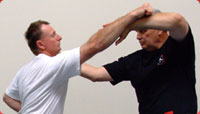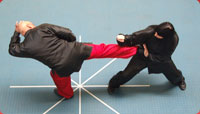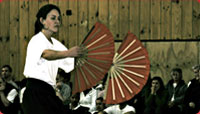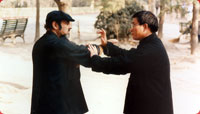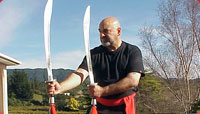Training Methods
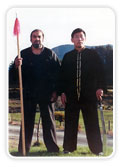
When people talk about the Shaolin Temple they need to appreciate that apart from being the starting point for all Martial Arts systems, more than one style is taught. Some of these Art Forms were practically unheard of in the west. Over a lengthy period I dedicated myself to researching and learning the core movements of many of these styles.
In particular the advanced aspects were categorised to highlight the numerous attributes which derive from Martial Arts training. To fully understand a style, one must first identify the underlying principles of that style.
A quick visual identifying difference between styles can be made from the actual height that each Art operates from. Tae Kwon Do for example is a popular sport for young people. Ninety percent kicking requires a high stance, longer range and flexibility in leg movement. Down from this in physical height we can find many of the linear Karate styles. Chinese Gung Fu functions at a lower stance with Shaolin Kempo among the lowest. The lower one goes, the more hand techniques are utilised. Circular hand techniques are kinder on the body and lead to increased energy. Soft versus hard is an important consideration. A strong flexible body develops like the willow tree from circular training. Hard style training builds the mighty oak tree, which fails to survive the storm.
Choosing a style to suit, one needs to keep some of these factors in mind. such as “ What are you capable of physically?”
The first major difference between Chinese and Japanese Martial Arts was that my Instructor (Sensei) in Japan was a fit young 25 year old. Of course there were older Instructors but the majority of the training was hard style basic sweat sessions. Being in my twenties and slim and fit, I loved this type of training.
Moving on to Okinawa I noticed that my Instuctor was middle aged and that the techniques were more circular with a softer approach to the workouts. Most of the students in the class were also middle aged.
In sharp contrast my teacher (Laoshi) in China was much older. Eighty was still comparatively young and the ability of these older practitioners had to be seen to be believed.After defeating me in many challenges (a common part of Chinese Gung Fu) my teacher said. “You have been training the wrong way, from the outside in. You need to start again from the inside out.” I took this advice, as it was clear that the level of technique, power and fitness there was superior to anything I had seen previously.
Training methods in my School can circumnavigate all three examples given according to the focus that each student wishes to make. Martial Arts are so beneficial to our good health and long life, we need to learn movements and style that can span a lifetime.
While sweat sessions have their place, balanced training must always be a part of any good programme.Self Defence and fighting technique pale into insignificance when compared with the good health, healing and harmony that derives from properly structured training programmes.



